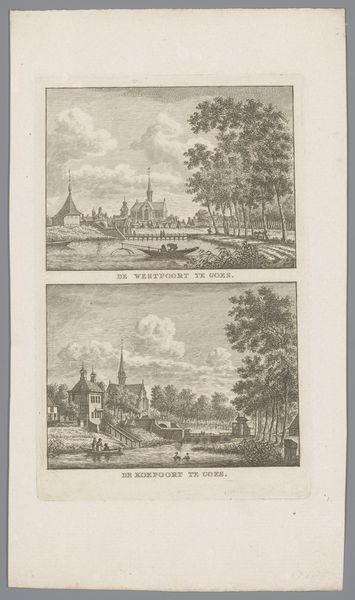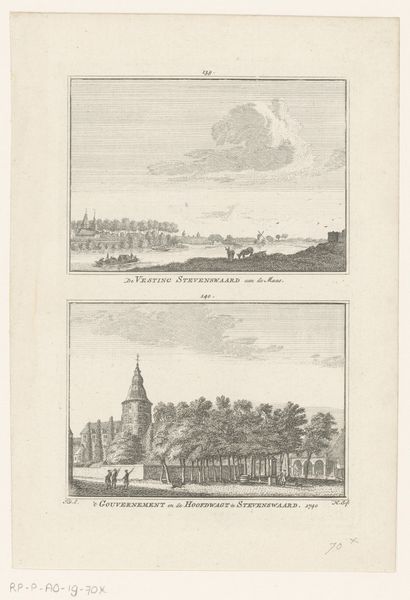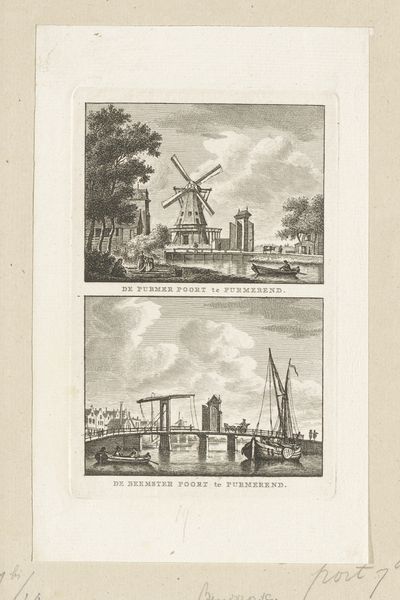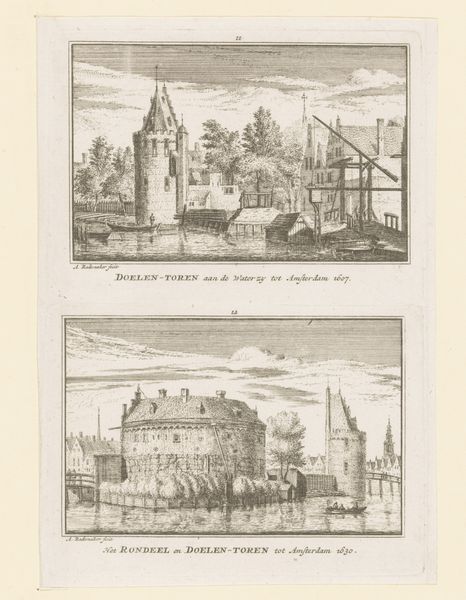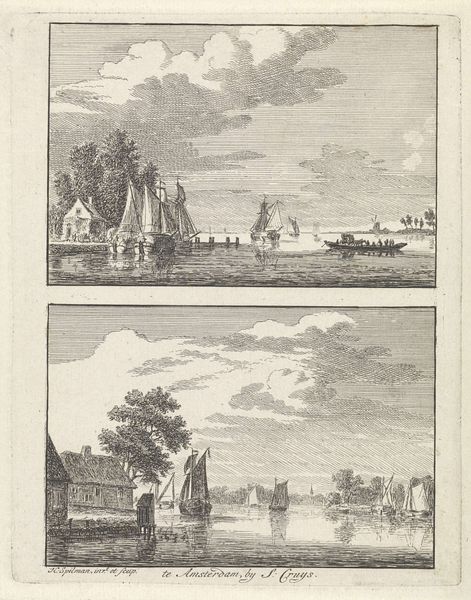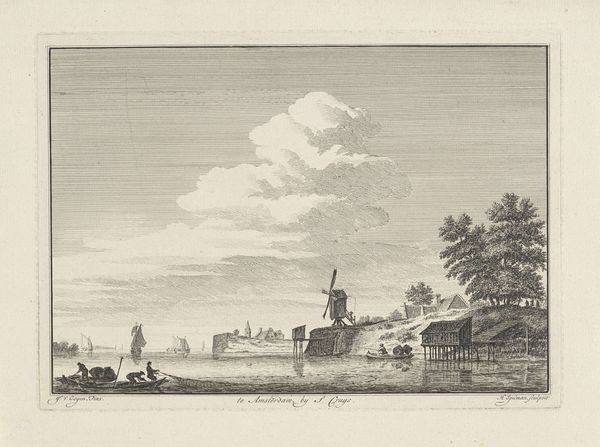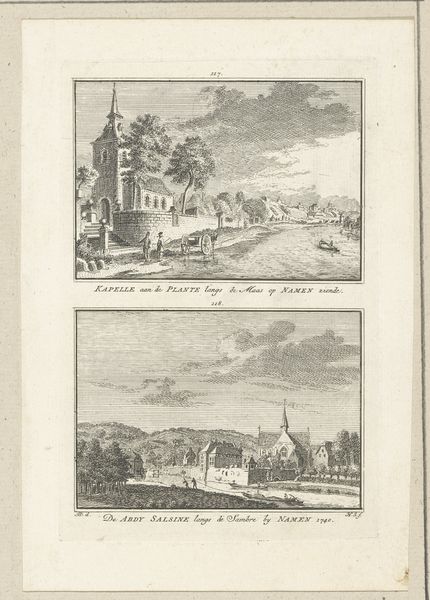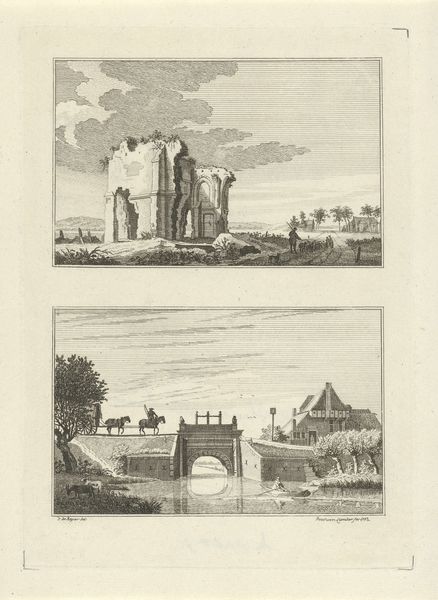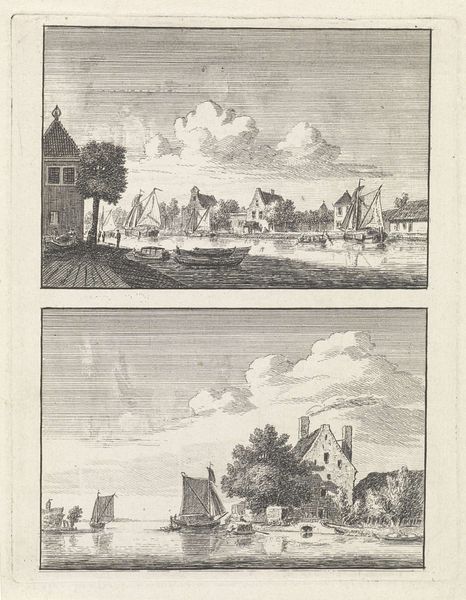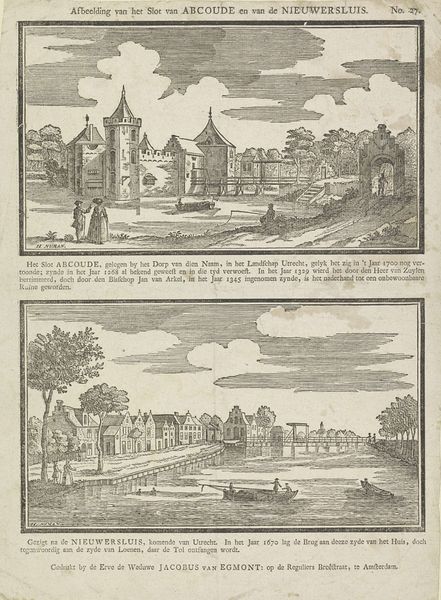
Gezichten op de Noorderpoort en de Donjumerpoort te Franeker 1786 - 1792
0:00
0:00
carelfrederikibendorp
Rijksmuseum
print, etching, engraving
#
dutch-golden-age
# print
#
etching
#
landscape
#
cityscape
#
engraving
Dimensions: height 170 mm, width 110 mm
Copyright: Rijks Museum: Open Domain
Editor: This etching from the late 1700s by Carel Frederik Bendorp, titled "Views of the Noorderpoort and Donjumerpoort in Franeker," presents two distinct cityscapes. They both seem quite idyllic, peaceful even. What catches your eye when you look at this print? Curator: I'm struck by the implied narrative around access and restriction, wouldn't you say? Ports were literally gateways, checkpoints. The imagery highlights the flow of goods and people, controlled access shaping urban and economic landscapes, and, by extension, lived experience. Who could move freely and who faced barriers? Editor: So, it's not just pretty pictures of buildings, but a commentary on societal structures? Curator: Precisely. The dominance of the windmill and fortified gates point to the centers of power. Dutch Golden Age art often masked economic realities in seemingly serene settings. Consider also the level of detail dedicated to portraying the natural landscape. What purpose do you think this serves? Editor: Maybe it is there to soften the impact, blurring out any harsh edges of social commentary to emphasize harmony and prosperity. Do you think this was a successful strategy for that era? Curator: A successful illusion, perhaps, or maybe one of many overlapping discourses coexisting within a complex society. By displaying the elite architecture alongside nature, they create a sense of integrated control. And consider: were such prints accessible to all? To what extent did images shape—or distort—public perception? Editor: That’s a fascinating point. Thinking about access, even access to the image itself, opens up so many layers. Curator: Indeed. It challenges us to deconstruct seemingly simple depictions and interrogate their social and political underpinnings. It encourages questioning what perspectives are being represented. Editor: I'm definitely seeing this print in a different light now. The images feel much more complex, laden with deeper questions. Curator: Exactly. Recognizing these embedded narratives provides avenues for critical analysis that speak across centuries.
Comments
No comments
Be the first to comment and join the conversation on the ultimate creative platform.

